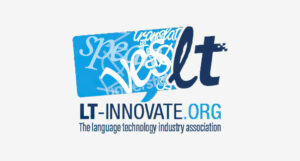The next frontier for the localization industry is inclusion, and a major driving force behind efforts for broader accessibility is machine translation and cognitive AI. AI is transforming the localization industry, workflows within the industry, and daily life. The success stories around machine translation have acted as a catalyst for many organizations to adopt other forms of cognitive AI for various business applications across the content chain, from creation to transformation.
Keep reading for an exploration of real-world AI-driven applications and a discussion of where cognitive AI innovations are heading.
• • •
Over the past year, GlobalSaké has brought together thought leaders from throughout the localization industry for monthly conferences around some of the hottest topics. Some of the past discussions were around understanding customers within the cultural context of their region or environment and strategies for entering new markets in Japan and Germany. At the finale of GlobalSaké’s year-long ParlamINT series, Konstantin Savenkov (CEO, Intento) and Pascale Tremblay (Director of Localization, GAP) shared their experiences and expertise to form a conversation around the expanding role of cognitive AI.
• • •
Here are the key points to consider:
How AI is impacting the content creation cycle
As localization has become increasingly more automated through the widespread adoption of machine translation, the focus of new growth has moved upstream to improvements in content authoring and transformation between visual, audio, and textual mediums.
“Localization is just one of the ways to make content more accessible” — Konstantin Savenkov (CEO, Intento)
Transformations between different forms of content take into account not only the audience’s language knowledge but also their sensory abilities.
This level of inclusion is impossible to achieve without automating a very broad range of processes — but luckily the technology is already in place. We now have speech transcription and voiceover automation, along with various tools for content generation, all driven by cognitive AI. These tools help completely personalize your message before the translation stage, making your content more accessible and decreasing the time and cost of post-editing efforts.
The biggest implications for GAP and the global enterprise
Tremblay’s experience with the localization team at GAP reveals that as the technology is evolving, the organization is witnessing positive changes both internally and externally.
“The new technology is influencing not only how we at GAP work cross-functionally and efficiently but also how we appear” — Pascale Tremblay (Director of Localization, GAP)
From a business point of view, Ai affects localization on a couple of different levels. At the foundation level, there is a repositioning of the department’s role in the company. The central task of text translation is expanding to encompass several types of boundaries outside of language.
Individual roles are becoming hyper-specialized. This is especially true for the role of linguists. While MT initially made both linguists and project managers nervous in regards to job security, but they soon realized that MT was not a replacement but a tool for accelerated efforts. GAP is discovering new ways for employees to add value on top of the automated processes, heightening the level of productivity and the quality of outcomes. It’s not about taking components out of the company, but restructuring operations for greater growth.
“AI is changing the way we work rather than taking our jobs away” — Pascale Tremblay (Director of Localization, GAP)
What ties corporate culture to customer culture
Savenkov sees a greater emphasis being placed on user feedback (in regards to outcome quality) as one of the biggest implications for localization teams. AI-empowered technologies can be adjusted and ultimately improved based on feedback data. It’s not only becoming a convenient tool but an absolute necessity if one wants to achieve 100% user satisfaction. You need linguists to work with feedback and tools to adjust AI output.
At the same time, as tools in content generation become more widespread, the role of linguists will evolve to broader cultural contexts outside of language. Linguists will play an active role in tying corporate and customer culture by ensuring all localized content fits the appropriate cultural context.
“As the role of feedback in your company becomes more prevalent, there will be more areas of opportunity to discover how we align content and culture” — Konstantin Savenkov (CEO, Intento)
The GAP has seen an expansion of live virtual events, and areas such as interpretation grew more than 5x. The virtual nature of the events meant that they were becoming more global, and they had to ensure that the content was accessible for all audiences. AI-empowered speech technologies and the resulting interpretation tools have been an integral part of making this happen.
• • •
You can access the full conference video here.



